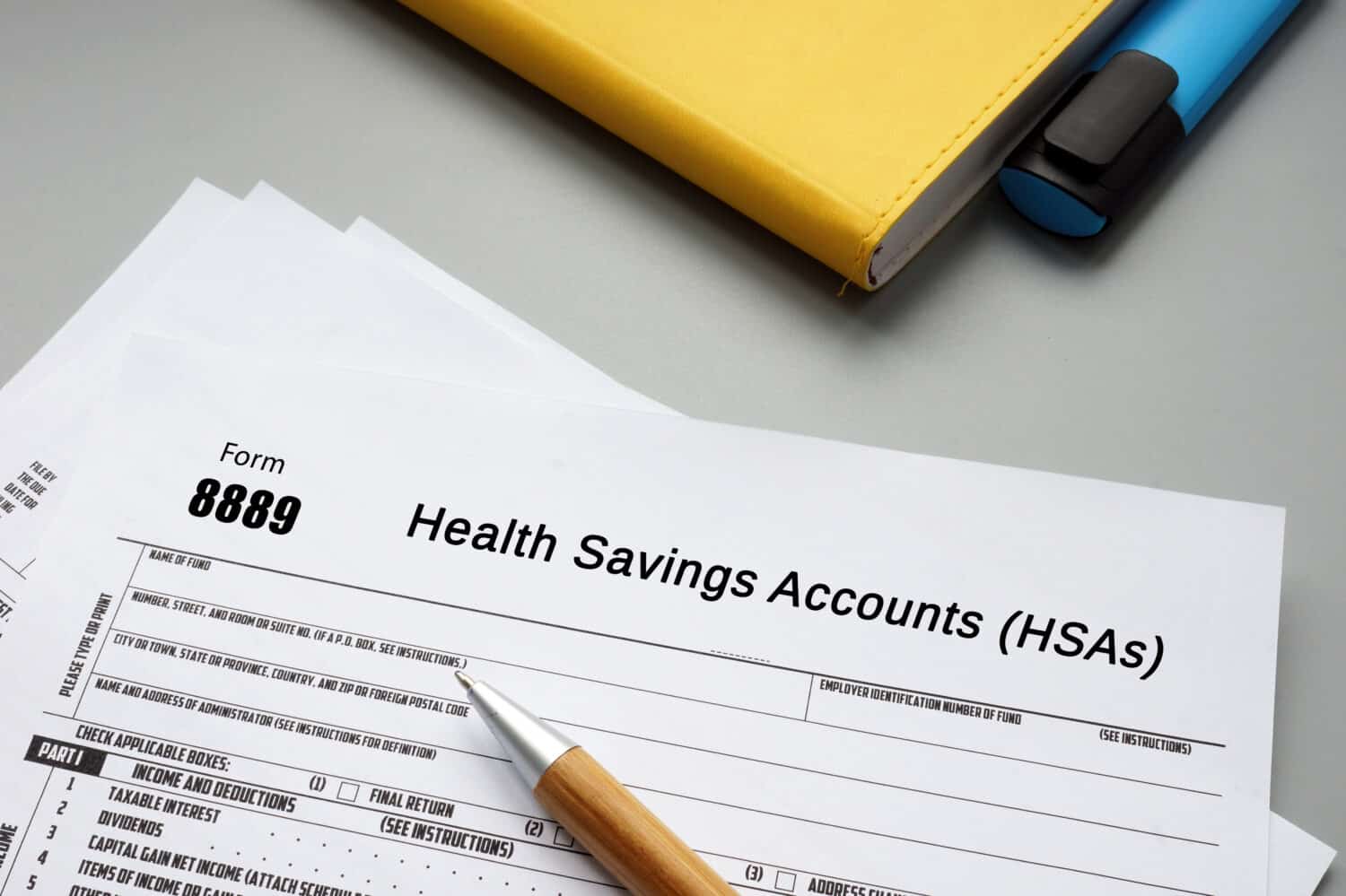
A health savings account (HSA) allows you to save and invest money for future medical expenses while earning key tax benefits.
But in order to make the most out of those tax breaks, you need to properly fill out and file Form 8889. This is an IRS document on which you report contributions and withdrawals regarding your HSA for any given tax year. Filling it out would help you report tax-deductible contributions and ensure your distributions were made to cover qualified healthcare expenses tax-free.
So let’s take a look at how to complete Form 8889.
How to fill out Form 8889

The IRS Form 8889, Health Savings Accounts (HSAs) is fairly straightforward. But let’s cover some key aspects of this document.
You begin on Part one, line 1 where you declare self-only or family coverage under an HSA-eligible high-deductible health plan (HDHP). In order to contribute to an HSA, you must be covered by an eligible HDHP and have no other health coverage beyond specific disregarded coverage. You also can’t be enrolled in Medicare or be someone’s dependent.
Next on line 3, you report the amount of contributions you made to your HSA or those that were made on your behalf other than employer contributions. Note that this doesn’t include contributions made through payroll deduction, which technically are employer contributions. So, you may jot down zero if you got your HSA through your employer and the only contributions made to the account were pre-tax in the form of payroll deductions. In this scenario, those payroll deductions already decreased your taxable income for the tax year.
And when filling out line two, be aware of the current contribution limits. For 2024, the HSA contribution limits are $4,150 for self-only coverage and $8,300 for family coverage. If you’re 50 or older, you may contribute an additional catch-up contribution of $1,000. You may contribute to your HSA for the previous tax year until the tax deadline (Typically April 15). If you overcontribute, you must withdraw the excess contributions before the tax deadline or potentially face a 6% penalty tax on the excess contributions.
You can find your total contributions for the tax year on Form 5498-A, which your HSA administrator is required to send you. However, they aren’t required to send you this form until May because the contribution deadline may extend to April 15. But if you have an online account for your HSA, you should be able to log on and view your total contributions.
Another important aspect of Form 8889 is line 9. Here, you report employer contributions made to your HSA including payroll deductions. You can find this total on your W-2, Wage and Tax Statement, in box 12 under the code W.
The second part of Form 8889 is where you report withdrawals or distributions made from your HSA. This is important because it helps the IRS know whether they were used on qualified medical expenses and therefore tax-free. For those with family coverage, this includes distributions made for yourself, your wife, and dependents. You can find the total distributions on Form 1099-SA, which HSA administrators are required to send by late January.
You don’t need to send the IRS receipts of your healthcare coverage to prove it was qualified. But it’s important to keep them for your records for at least three years in case the IRS audits you.
Part three and the final section of Form 8889 is where you report any qualified funding distributions or rollovers you made from a traditional individual retirement account (IRA) or Roth IRA to an HSA. This is also where you’d calculate additional taxes you may owe.
HSA benefits

HSAs stand out for their triple-tax advantage. Here are the tax benefits you can enjoy with an HSA.
- Tax deductible or pre-tax contributions
- Money grows tax-free in an HSA
- Tax-free withdrawals for qualified healthcare expenses
But there’s more to it than that. Unlike other healthcare savings accounts like Flexible Spending Accounts (FSA), the money in an HSA doesn’t expire. So it rolls over into the next year and the money is still yours and can still grow from interest or capital gains.
With that said, some HSA providers allow you to invest some of your HSA dollars in growth-focused securities like exchange-traded funds (ETFs), mutual funds, and stocks.
Plus, your HSA isn’t subject to required minimum distributions (RMD). When it comes to traditional IRAs and 401(k)s, you typically would need to start making withdrawals when you reach age 73. That’s not the case with HSAs. So your money could keep growing year after year.
In addition, your HSA can be used as a retirement savings tool. That’s because after you reach age 65, you can make withdrawals for anything without the 20% penalty. However, you’d still owe ordinary income taxes on any distribution that’s not for a qualified medical expense.
And if you get your HSA through your employer, your company may make contributions to your HSA too. And there’s typically no vesting period. So your employer contributions are yours immediately.
Why we covered this

HSAs can be immensely beneficial as health savings vehicles and retirement tools. But to make the most out of its benefits, you need to carefully report contributions and withdrawals on Form 8889. So that’s why we developed this guide to help walk you through the process.
If you want to learn more about HSAs, check out our regularly-updated HSA main page for the latest coverage.
The Average American Has No Idea How Much Money You Can Make Today (Sponsor)
The last few years made people forget how much banks and CD’s can pay. Meanwhile, interest rates have spiked and many can afford to pay you much more, but most are keeping yields low and hoping you won’t notice.
But there is good news. To win qualified customers, some accounts are paying almost 10x the national average! That’s an incredible way to keep your money safe and earn more at the same time. Our top pick for high yield savings accounts includes other benefits as well. You can earn up to 3.80% with a Checking & Savings Account today Sign up and get up to $300 with direct deposit. No account fees. FDIC Insured.
Click here to see how much more you could be earning on your savings today. It takes just a few minutes to open an account to make your money work for you.
Our top pick for high yield savings accounts includes other benefits as well. You can earn up to 4.00% with a Checking & Savings Account from Sofi. Sign up and get up to $300 with direct deposit. No account fees. FDIC Insured.
Thank you for reading! Have some feedback for us?
Contact the 24/7 Wall St. editorial team.





